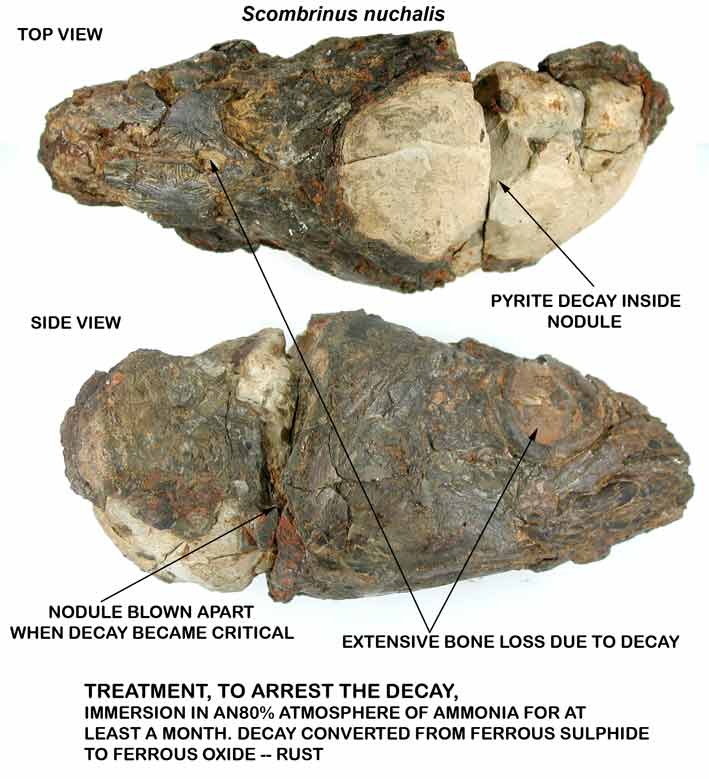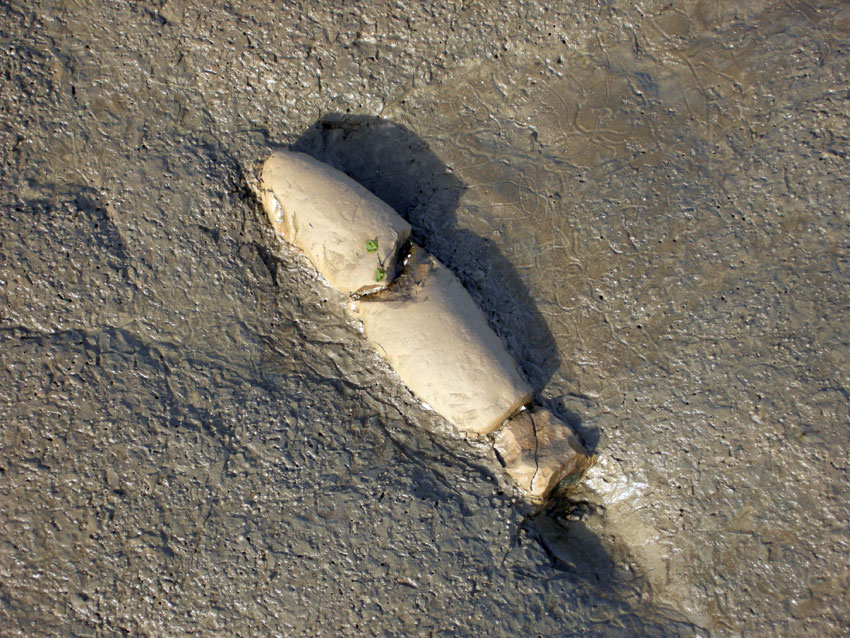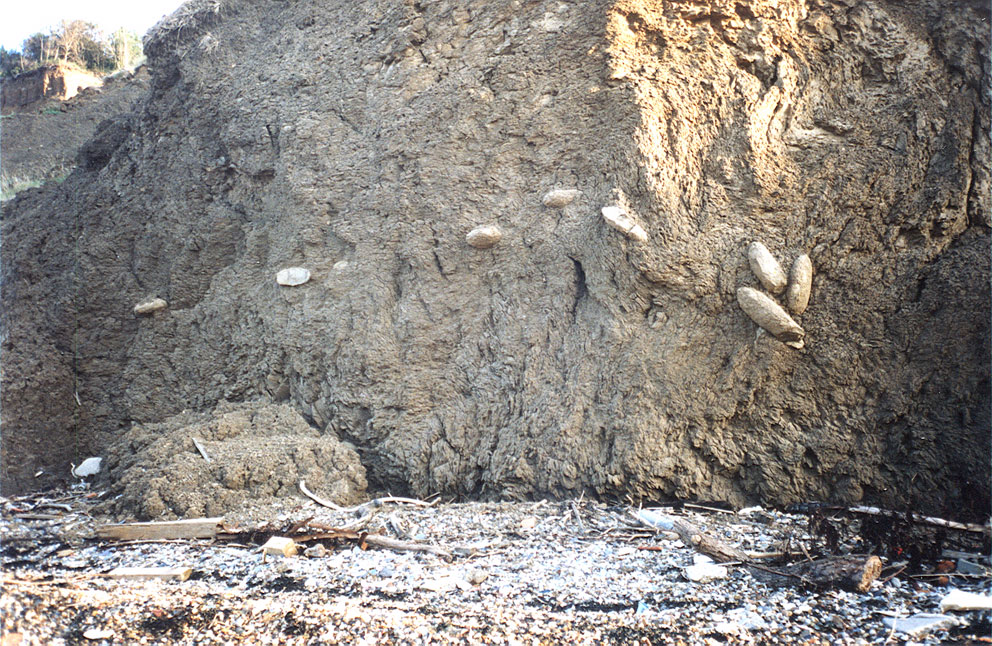PRESERVATION
The wealth of fossil remains within the London Clay is due to a few specific modes of preservation:
Pyritisation
A large proportion of the flora as well as the molluscs and other invertebrates are preserved in pyrite. In the abundant seed and twig debris clear cellular details are preserved. Larger fruits and seeds are often preserved as a mixture of pyrite and acellular carbonaceous material. Gastropods and brachiopods are usually preserved with pyrite internal casts. Small fish skulls often have a pyrite endocranial cast and pyrite encrusted surfaces. Starfish and echinoids, both relatively uncommon, often have all their calcite replaced by pyrite. Accumulations of molluscan debris, barnacle plates, teleost otoliths and bones found banked up against drifted logs are a feature of the foreshore at Sheppey. They can be spotted by the blue colour the usually grey-brown clay turns with locally precipitated pyrite. The preservation of pyrite is a difficult problem. In damp conditions it rapidly decomposes to oxides of iron and sulphuric acid. This destroys any associated calcite and damages bone. Most attempts to preserve pyrite, ranging from varnishes to 5% cetrimide solution are relatively ineffective. Washing, neutralisation and storage in silicon fluid appears to be the best currently available method.

Phosphatisation

Trace fossils, probably crustacean burrows, are the most commonly encountered phosphatic fossil. Balson (1987) identified six phosphogenic episodes in the Tertiary. The first of these took place in late London Clay times, during the deposition of divisions B - D London Clay. He concluded that authigenic phosphate is deposited in sediments at the time of the maximum transgressive extent and where there is a rich and diverse biota. It is as a direct result of this episode that we have the wealth of phosphatised fossils. Crustacean carapaces, usually cast, burrow systems and large vertebrates act as a nuclei for authigenic phosphate concretions although any nucleus would do. The surface of most of the nodules is soft and can be prepared away to expose superbly preserved fossil remains. Although not directly phosphatised, the unusually fine preservation of the isolated sharks' teeth and fish bones is also due to the high levels of non-biogenic phosphate.

Septarian nodules and cement stone
Septaria, so-called because they enclose calcite lined cavities, and cement stones occur in known horizons in the cliff and foreshore. They can be individually identified and are used for local correlation (King 1984). Trace fossils, usually in very fine detail, and sometimes bivalves are preserved on their surfaces. Drifted logs are often encased in cement stone. Rarely large vertebrate remains are also encased within these stones as well as the pearly Nautilus.
.jpg)


